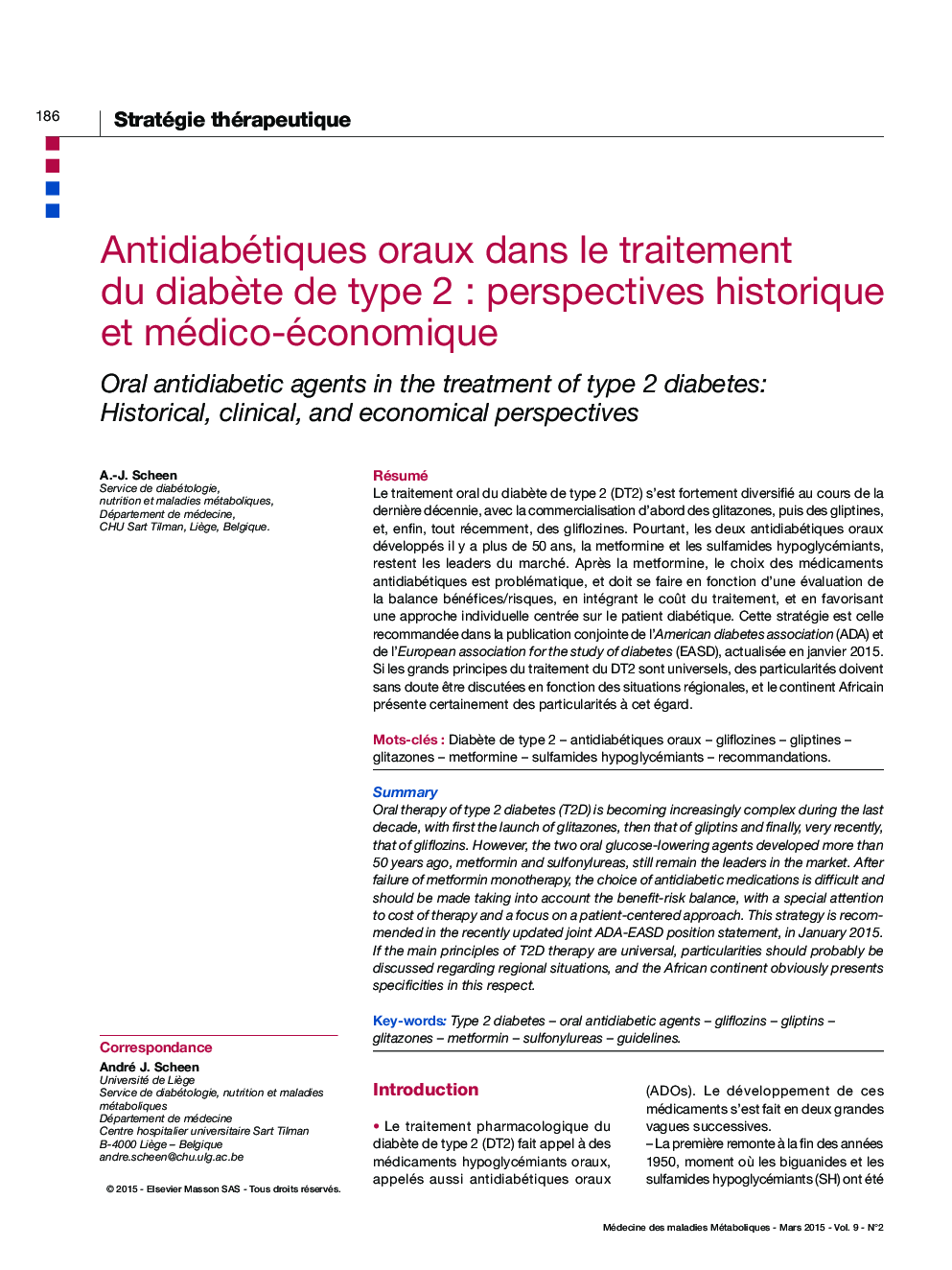| Article ID | Journal | Published Year | Pages | File Type |
|---|---|---|---|---|
| 3274341 | Médecine des Maladies Métaboliques | 2015 | 12 Pages |
Abstract
Oral therapy of type 2 diabetes (T2D) is becoming increasingly complex during the last decade, with first the launch of glitazones, then that of gliptins and finally, very recently, that of gliflozins. However, the two oral glucose-lowering agents developed more than 50 years ago, metformin and sulfonylureas, still remain the leaders in the market. After failure of metformin monotherapy, the choice of antidiabetic medications is difficult and should be made taking into account the benefit-risk balance, with a special attention to cost of therapy and a focus on a patient-centered approach. This strategy is recommended in the recently updated joint ADA-EASD position statement, in January 2015. If the main principles of T2D therapy are universal, particularities should probably be discussed regarding regional situations, and the African continent obviously presents specificities in this respect.
Keywords
Related Topics
Health Sciences
Medicine and Dentistry
Endocrinology, Diabetes and Metabolism
Authors
A.-J. Scheen,
